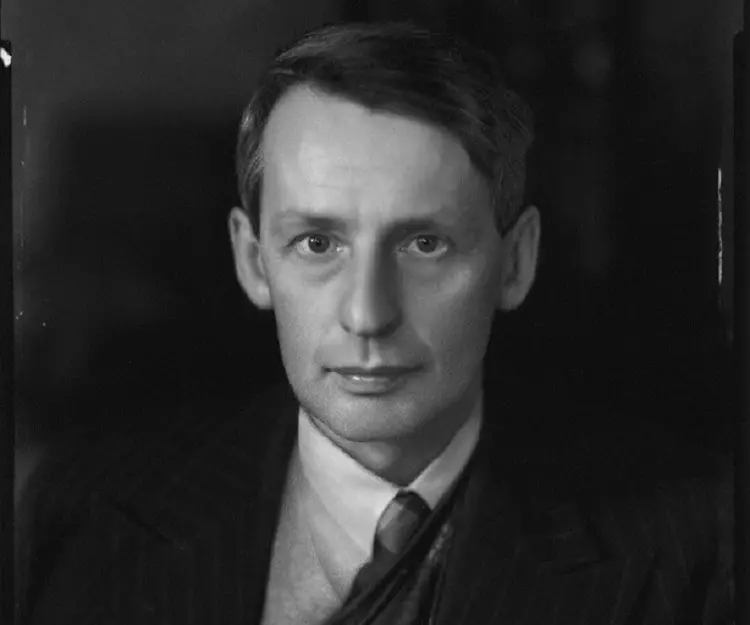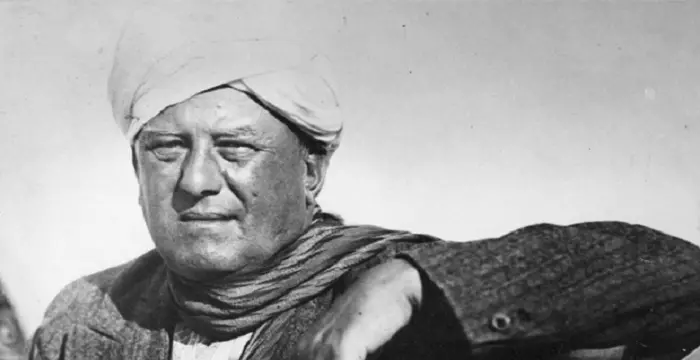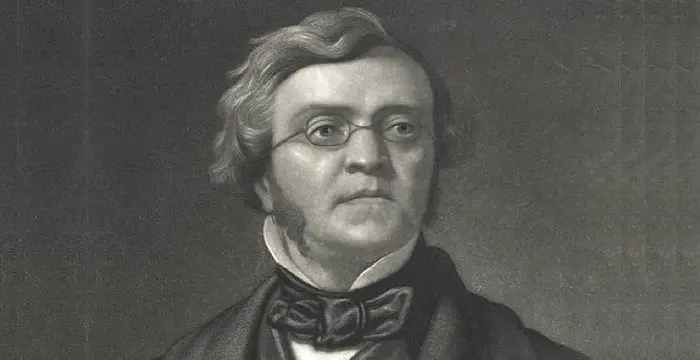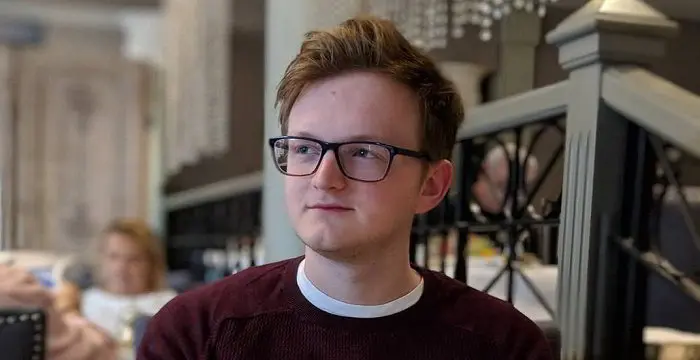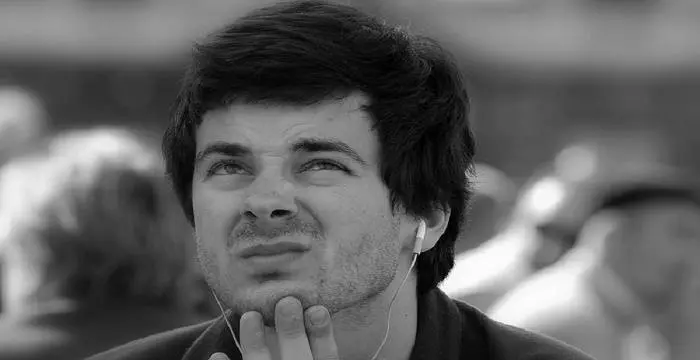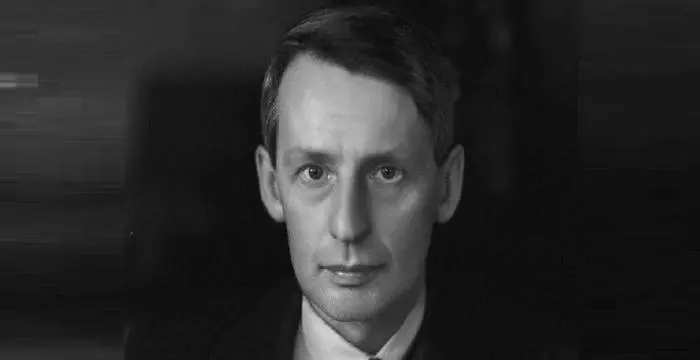
George Paget Thomson - Trinity College, Cambridge, Family and Childhood
George Paget Thomson's Personal Details
George Paget Thomson was an English physicist who won the 1937 Nobel Prize in Physics
| Information | Detail |
|---|---|
| Birthday | May 3, 1892 |
| Died on | September 10, 1975 |
| Nationality | British |
| Famous | Trinity College, Cambridge, Scientists, Physicists |
| Siblings | Joan Paget Thomson |
| Known as | Sir George Thomson |
| Universities |
|
| Notable Alumnis |
|
| Birth Place | Cambridge |
| Gender | Male |
| Father | Joseph John Thomson |
| Mother | Rose Elisabeth Paget |
| Sun Sign | Taurus |
| Born in | Cambridge |
| Famous as | Physicist |
| Died at Age | 83 |
// Famous Scientists
Juliane Koepcke
Juliane Koepcke is a German-Peruvian biologist, who was the lone survivor among the 92 passengers and crew of the ill-fated LANSA Flight 508 that crashed in the Peruvian rainforest on 24 December 1971. Know more about her life in this biography.
Henry Cavendish
Henry Cavendish was a theoretical chemist and physicist, renowned for discovery of hydrogen and calculation of the mass of earth. To know more about his childhood, profile, timeline and career read on
Konstantin Tsiolkovsky
Konstantin Tsiolkovsky was a Russian rocket scientist and a pioneer of astronautics. This biography provides detailed information about his childhood, family, personal life, career, achievements, etc.
George Paget Thomson's photo
Who is George Paget Thomson?
George Paget Thomson was an English physicist, who shared the 1937 Nobel Prize in Physics with Clinton Joseph Davison, for their discovery of diffraction of electrons by crystals. Born in an academically distinguished family, he had his entire education at Cambridge, where his Nobel laureate father, J. J. Thomson, was a Professor of Experimental Physics. Although he joined Corpus Christi College after completing his studies he soon abandoned it to join Britain’s war effort as the First World War broke out. However, he spent much of his time working on aerodynamics trying to improve stability of airplanes. Later he resigned from his commission to rejoin the Corpus Christi College, but soon shifted to the University of Aberdeen, where he undertook major experiments and discovered electron diffraction. Later he turned his attention to nuclear physics and when uranium fission was discovered, he was struck by its potential for military use. During the Second World War, he became the Chairman of the MAUD committee. Later he went to Ottawa as the Scientific Liaison Officer and worked closely with the Manhattan Project. After the war, he joined Imperial College, where he started probing into the possibility of manufacturing nuclear power from deuterium. He retired as the Master of Corpus Christi College, Cambridge.
// Famous Physicists
Henry Cavendish
Henry Cavendish was a theoretical chemist and physicist, renowned for discovery of hydrogen and calculation of the mass of earth. To know more about his childhood, profile, timeline and career read on
Walter Kohn
Nobel Laureate Walter Kohn was an Austrian-born American theoretical chemist and physicist. Check out this biography to know about his childhood, life, achievements, works & timeline.
Nikola Tesla
Nikola Tesla was a Serbian-American inventor, best known for his development of alternating current electrical systems. This biography of Nikola Tesla provides detailed information about his childhood, life, achievements, works & timeline.
Childhood & Early Life
George Paget Thomson was born on May 3, 1892 in Cambridge, England. His father, Sir Joseph John Thomson, won the Nobel Prize in Physics for his discovery of electron. At the time of George’s birth Thomson (Sr.) was working as a Professor of Experimental Physics in the Cavendish Laboratory at Cambridge.
George’s mother, Rose Elisabeth Paget, also came from an academically distinguished family. Her father, Sir George Edward Paget, was a physician and Regius Professor of Physic at Cambridge. In addition, she was also a student of physics at Cambridge.
Apart from George, couple had another child, a daughter named Joan Paget Thomson. She was almost eleven years junior to him and so he was effectively the only child for long.
George had his secondary education at The Perse School in Cambridge. In school, George developed a passion for boats. While he was still a boy, he made working models of boats and submarines, which he used to float on pools. He also made cannons and cartridges.
After passing out from school, he entered Trinity College in 1910. There, he studied mathematics for first two years and took up physics in the third year. After graduation, he entered Cavendish Laboratory for his post graduate degree and finally passed out in 1914.
In 1911, George started his research on charged fragments of molecules under his father’s guidance. Besides, he was fortunate enough to come in close contact with many well-known scientists like Charles Thomson Rees Wilson, W. L. Bragg and his father W. H. Bragg. He was especially interested in Braggs’ theory about X-ray.
Immediately after passing out in 1914, George was appointed as a lecturer in mathematics at Corpus Christi College. Unfortunately, the First World War broke out soon after and George was commissioned into the Queen's Royal West Surrey Regiment.
At that time, the regiment was stationed at France. After serving there for a brief period, George Paget Thomson joined Royal Flying Corps at the Royal Aircraft Factory at Farnborough to work on aerodynamics. His contribution to aeronautics earned him Smith Prize in 1916.
Later he was shifted to other bases, where he continued to work on different aerodynamic problems. He also spent nine months in the USA as part of the British Mission.
Career
In 1920, George Pager Thomson resigned from his commission as a captain and rejoined Corpus Christi College, Cambridge, as Fellow and Lecturer. Along with teaching, he also concentrated on research work. However, his major works were done at Aberdeen.
He joined University of Aberdeen as Professor of Natural Philosophy (Physics in Scotland is known as Natural Philosophy), in 1922 and served in this position till 1930. While working there, he carried on experiments on electrons, which his father, Sir J. J. Thomson had identified as particles.
In 1927, George Paget Thomson found that the electrons could be diffracted like a wave. He had them moved through very thin films of metals and found that in spite of being particles, electrons behaved as waves. Later this behavior came to be known as ‘electron diffraction’ and earned him Nobel Prize.
In 1929 and 1930, Thomson worked as a non resident lecturer at the Conwell University, New York. Then in 1930, he joined Imperial College, London. Here too he continued his experiment on electrons. It led to the development of electron microscope.
At the same time, Thomson started taking interest in nuclear physics. When the process for fission of uranium was discovered in the beginning of 1939, he became more interested in its military use. He then persuaded the British Air Ministry to procure one ton uranium oxide; but the Second World War broke out before he could complete his experiment.
During the war, Thomson started working for the Royal Aircraft Establishment. He was asked to look into a series of problems faced by the military; magnetic mine was one among them.
When the Military Application of Uranium Detonation (MAUD) Committee was formed in 1940 to look into the feasibility of making an atomic bomb, Thomson was appointed as his Chairman. In 1941, the Committee concluded that such bombs were feasible.
Thomson next went to the United States and handed over the report to the American scientists Vannevar Bush and James Conant. He spent the next year at Ottawa, functioning as the Scientific Liaison Officer and remained in touch with the Manhattan Project, which was entrusted with the task of manufacturing the atomic bomb.
Thomson returned to England in the following year. He was first appointed as the Vice-Chairman of the Radio Board. Later he became Scientific Adviser to the Air Ministry.
Once the war concluded in 1945, Thomson returned to Imperial College. In early 1946, his attention was turned to heavy hydrogen, technically known as deuterium. He began to probe into the feasibility of manufacturing nuclear power from it. However, his work on this topic was mainly theoretical.
Later on, the project was shifted to Associated Electrical Industry's Research Laboratories at Aldermaston because of security reasons. Even then, Thomson continued as one of the consultants.
He left imperial College in 1952 to become the Master of Corpus Christi College, Cambridge. He retired from there in 1962.
Major Works
Although Thomson had worked on various projects his work on diffraction of electrons is the most important one. It proved the principle of ‘wave-particle duality’ as proposed by French Physicist Louis de Broglie. Such discovery made examination of the atomic structure of solid surfaces feasible.
George Paget Thomson also wrote a number of books. Among them, ‘Theory and Practice of Electron Diffraction’ (1939), ‘The Atom and The Foreseeable Future’ (1955), ‘The Inspiration of Science’ (1962) and ‘J.J. Thomson and the Cavendish Laboratory in His Day’ (1965) are especially noteworthy.
Awards & Achievements
In 1937, George Paget Thomson was awarded Nobel Prize in Physics for his experimental discovery of diffraction of electrons. However, he had to share this prize with American Physicist Clinton Joseph Davison, who had come to the same conclusion using a different method more or less at the same ime.
In addition, he was a Fellow of the ‘Royal Society’ and received the Society’s Hughes Medal in 1939 and Royal Medal in 1949. He was also knighted in 1943.
Personal Life & Legacy
George Paget Thomson married Kathleen Buchanan Smith in 1924.The couple had four children; two sons and two daughters. Kathleen died in 1941.
His eldest son, John Adam Thomson, was a United Nations diplomat while his younger son, David Paget Thomson, was a businessman.
Thomson died a natural death on September 10, 1975, in Cambridge, England, at the age of 83.
Trivia
During the First World War George Paget Jonson joined Royal Flying Corps. Though he learned to fly he was not a good pilot. According to his sons, he crashed three planes and kept their number plates as mementos. He mainly worked on aerodynamics.
Although he shared his Nobel Prize with American Physicist Clinton Joseph Davison, the two scientists worked independently and did not know about each other’s experiment.
// Famous Trinity College, Cambridge
Isaac Newton
Isaac Newton was an English scientist and mathematician, who discovered gravitation and Newtonian Mechanics. Read this biography to find more on his life.
Aleister Crowley
Aleister Crowley was an occultist and ceremonial magician who founded the ethical philosophy of Thelema. This biography of Aleister Crowley provides detailed information about his childhood, life, achievements, works & timeline.
William Makepeace Thackeray
William Thackeray was an English novelist and satirist. Read this brief biography to find more on his life & timeline.
George Paget Thomson's awards
| Year | Name | Award |
|---|---|---|
Other | ||
| 0 | 1937 - Nobel Prize in Physics | |
| 0 | 1939 - Hughes Medal | |
| 0 | 1960 - Faraday Medal | |
George Paget Thomson biography timelines
- // 3rd May 1892George Paget Thomson was born on May 3, 1892 in Cambridge, England. His father, Sir Joseph John Thomson, won the Nobel Prize in Physics for his discovery of electron. At the time of George’s birth Thomson (Sr.) was working as a Professor of Experimental Physics in the Cavendish Laboratory at Cambridge.
- // 1910 To 1914After passing out from school, he entered Trinity College in 1910. There, he studied mathematics for first two years and took up physics in the third year. After graduation, he entered Cavendish Laboratory for his post graduate degree and finally passed out in 1914.
- // 1911In 1911, George started his research on charged fragments of molecules under his father’s guidance. Besides, he was fortunate enough to come in close contact with many well-known scientists like Charles Thomson Rees Wilson, W. L. Bragg and his father W. H. Bragg. He was especially interested in Braggs’ theory about X-ray.
- // 1914Immediately after passing out in 1914, George was appointed as a lecturer in mathematics at Corpus Christi College. Unfortunately, the First World War broke out soon after and George was commissioned into the Queen's Royal West Surrey Regiment.
- // 1916At that time, the regiment was stationed at France. After serving there for a brief period, George Paget Thomson joined Royal Flying Corps at the Royal Aircraft Factory at Farnborough to work on aerodynamics. His contribution to aeronautics earned him Smith Prize in 1916.
- // 1920In 1920, George Pager Thomson resigned from his commission as a captain and rejoined Corpus Christi College, Cambridge, as Fellow and Lecturer. Along with teaching, he also concentrated on research work. However, his major works were done at Aberdeen.
- // 1922 To 1930He joined University of Aberdeen as Professor of Natural Philosophy (Physics in Scotland is known as Natural Philosophy), in 1922 and served in this position till 1930. While working there, he carried on experiments on electrons, which his father, Sir J. J. Thomson had identified as particles.
- // 1924 To 1941George Paget Thomson married Kathleen Buchanan Smith in 1924.The couple had four children; two sons and two daughters. Kathleen died in 1941.
- // 1927In 1927, George Paget Thomson found that the electrons could be diffracted like a wave. He had them moved through very thin films of metals and found that in spite of being particles, electrons behaved as waves. Later this behavior came to be known as ‘electron diffraction’ and earned him Nobel Prize.
- // 1937In 1937, George Paget Thomson was awarded Nobel Prize in Physics for his experimental discovery of diffraction of electrons. However, he had to share this prize with American Physicist Clinton Joseph Davison, who had come to the same conclusion using a different method more or less at the same ime.
- // 1939At the same time, Thomson started taking interest in nuclear physics. When the process for fission of uranium was discovered in the beginning of 1939, he became more interested in its military use. He then persuaded the British Air Ministry to procure one ton uranium oxide; but the Second World War broke out before he could complete his experiment.
- // 1940 To 1941When the Military Application of Uranium Detonation (MAUD) Committee was formed in 1940 to look into the feasibility of making an atomic bomb, Thomson was appointed as his Chairman. In 1941, the Committee concluded that such bombs were feasible.
- // 1943In addition, he was a Fellow of the ‘Royal Society’ and received the Society’s Hughes Medal in 1939 and Royal Medal in 1949. He was also knighted in 1943.
- // 1945 To 1946Once the war concluded in 1945, Thomson returned to Imperial College. In early 1946, his attention was turned to heavy hydrogen, technically known as deuterium. He began to probe into the feasibility of manufacturing nuclear power from it. However, his work on this topic was mainly theoretical.
- // 1952 To 1962He left imperial College in 1952 to become the Master of Corpus Christi College, Cambridge. He retired from there in 1962.
- // 10th Sep 1975Thomson died a natural death on September 10, 1975, in Cambridge, England, at the age of 83.
// Famous British peoples
Wentworth Miller
Wentworth Miller is an American actor and screenwriter who achieved recognition for his role in the TV series ‘Prison Break’.
Sophie Reade
Sophie Victoria Reade is a British model and reality show star. Let’s take a look at her family and personal life, including her age, birthday, boyfriends, and some interesting facts.
Josh Temple
Check out all that you wanted to know about Josh Temple (Slogoman), the famous British YouTube Personality; his birthday, his family and personal life, his girlfriends, fun trivia facts and more.
Yammy Xox
Check out all that you wanted to know about Yammy Xox, the famous British YouTube Personality; her birthday, her family and personal life, her boyfriends, fun trivia facts and more.
Grian
Grian is an English YouTube gamer and social media influencer. Check out this biography to know about his birthday, childhood, family life, achievements and fun facts about him.
Benjamin Atkinson
Benjamin Atkinson is the son of the world-renowned British actor and comedian, Rowan Atkinson. Check out this biography to know about his childhood, family, personal life, including his age, birthday, etc.
George Paget Thomson's FAQ
What is George Paget Thomson birthday?
George Paget Thomson was born at 1892-05-03
When was George Paget Thomson died?
George Paget Thomson was died at 1975-09-10
Where was George Paget Thomson died?
George Paget Thomson was died in Cambridge
Which age was George Paget Thomson died?
George Paget Thomson was died at age 83
Where is George Paget Thomson's birth place?
George Paget Thomson was born in Cambridge
What is George Paget Thomson nationalities?
George Paget Thomson's nationalities is British
Who is George Paget Thomson siblings?
George Paget Thomson's siblings is Joan Paget Thomson
What was George Paget Thomson universities?
George Paget Thomson studied at Trinity College, Cambridge, University of Cambridge, Trinity College, Cambridge
What was George Paget Thomson notable alumnis?
George Paget Thomson's notable alumnis is Trinity College, Cambridge
Who is George Paget Thomson's father?
George Paget Thomson's father is Joseph John Thomson
Who is George Paget Thomson's mother?
George Paget Thomson's mother is Rose Elisabeth Paget
What is George Paget Thomson's sun sign?
George Paget Thomson is Taurus
How famous is George Paget Thomson?
George Paget Thomson is famouse as Physicist



